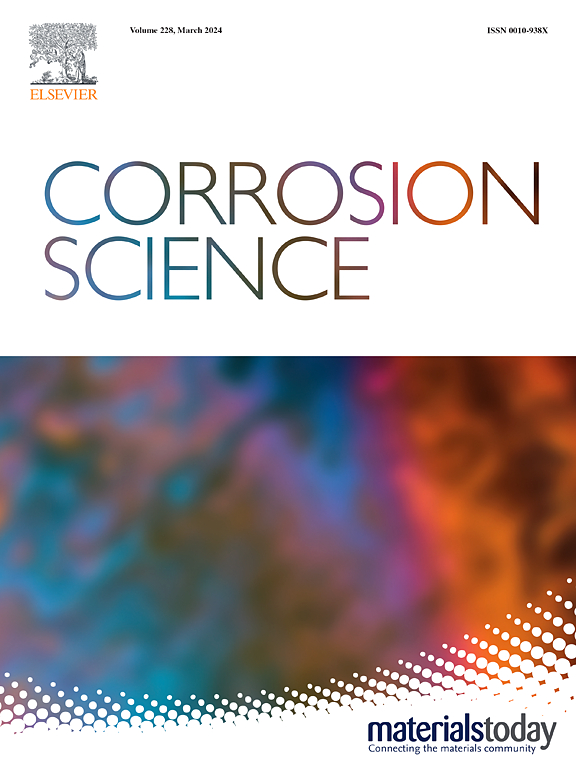Hydrogen-induced crack behavior of a precipitation-strengthened Ni50Cr20Co15Al10V5 high entropy alloy
IF 7.4
1区 材料科学
Q1 MATERIALS SCIENCE, MULTIDISCIPLINARY
引用次数: 0
Abstract
The hydrogen-induced cracking behavior and mechanism of an L12-strengthened Ni50Cr20Co15Al10V5 high entropy alloy was evaluated using the tensile test after hydrogen charging. The microstructures and hydrogen-induced cracks were characterized by electron backscatter diffraction and electron channeling contrast imaging methods. The results revealed that hydrogen decreased the strain hardening rate and induced pronounced cracks, leading to significant degradation in elongation. After deformation, the local strain was concentrated in the precipitate-matrix interfaces. The precipitate-matrix boundary and the interior of precipitates were prone to hydrogen embrittlement, where hydrogen-induced cracks tended to propagate, attributing to the hydrogen-enhanced decohesion mechanism.
沉淀强化 Ni50Cr20Co15Al10V5 高熵合金的氢致裂纹行为
利用充氢后的拉伸试验评估了 L12 强化 Ni50Cr20Co15Al10V5 高熵合金的氢致裂纹行为和机理。采用电子反向散射衍射和电子通道对比成像方法对微观结构和氢致裂纹进行了表征。结果表明,氢降低了应变硬化率并诱发了明显的裂纹,导致伸长率显著下降。变形后,局部应变集中在沉淀-基体界面。析出物-基体边界和析出物内部容易发生氢脆,氢诱导的裂纹倾向于在此扩展,这归因于氢增强的解粘机制。
本文章由计算机程序翻译,如有差异,请以英文原文为准。
求助全文
约1分钟内获得全文
求助全文
来源期刊

Corrosion Science
工程技术-材料科学:综合
CiteScore
13.60
自引率
18.10%
发文量
763
审稿时长
46 days
期刊介绍:
Corrosion occurrence and its practical control encompass a vast array of scientific knowledge. Corrosion Science endeavors to serve as the conduit for the exchange of ideas, developments, and research across all facets of this field, encompassing both metallic and non-metallic corrosion. The scope of this international journal is broad and inclusive. Published papers span from highly theoretical inquiries to essentially practical applications, covering diverse areas such as high-temperature oxidation, passivity, anodic oxidation, biochemical corrosion, stress corrosion cracking, and corrosion control mechanisms and methodologies.
This journal publishes original papers and critical reviews across the spectrum of pure and applied corrosion, material degradation, and surface science and engineering. It serves as a crucial link connecting metallurgists, materials scientists, and researchers investigating corrosion and degradation phenomena. Join us in advancing knowledge and understanding in the vital field of corrosion science.
 求助内容:
求助内容: 应助结果提醒方式:
应助结果提醒方式:


